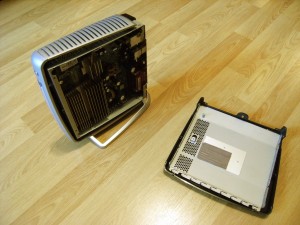 This is the first in a three part article focusing on the entire process of Virtualizing in an industrial environment. While there is a lot of talk about Virtualizing and VDI, we wanted to focus on the viability and deployment of Virtualization in an industrial and manufacturing environment which would speak to the concerns and difficulties specific to this industry.
This is the first in a three part article focusing on the entire process of Virtualizing in an industrial environment. While there is a lot of talk about Virtualizing and VDI, we wanted to focus on the viability and deployment of Virtualization in an industrial and manufacturing environment which would speak to the concerns and difficulties specific to this industry.
Part 1: Centralization Before Virtualization
Virtualization.
It is everywhere and there is no escaping it. It is written about, discussed, recommended, and deployed in offices and facilities around the world every day. It is the iPhone of IT…you might not know why you are buying it, you just know that everyone else is using it so it must be the next great thing. But as implementation of virtualized environments continues to become the norm rather than the exception, industry publications are reporting that up to 40% of Virtualization deployments are never completed and eventually scrapped.
Why then, is the “greatest thing since sliced bread” still being rolled out everywhere even with such a high rate of abandonment?
Simply put, companies are not asking the right questions before making the decision to go forward with radically changing the way they approach their computing environment. In an industrial environment, where time literally IS money, there is a completely different question that must be asked and answered before considering virtualization.
Implementation of a centralized system is the first important building block on the road to a Virtualization. So for those operating industrial environments it is imperative to figure out if you are a good candidate for Centralization. That determination can be made by reviewing the following criteria:
How much support do your clients require?
Regardless of the number of clients you currently have deployed, this is the single most important factor when determining if you are a good candidate for Centralization. In a harsh or spread out environment where replacing client hardware is a common occurrence, there is a greater opportunity to realize long term savings by centralizing even when faced with an initial cash layout. Chances are that if you have not centralized, you are allocating resources to maintain an antiquated or manual system to monitor and maintain your current processes.
Does your facility require an application driven process or a process where an application is being used to monitor your processes?
 An industrial process based on application usage would almost always benefit by making the switch to a centralized system. In a manufacturing environment, having a single end user machine hosting an important process is a recipe for disaster. When hardware failure occurs, being able to swap out the client and access the application from the server can reduce down time on the floor from hours to minutes. In addition, linking your clients to a centralized system can greatly reduce the costs associated with client deployment and continuing support.
An industrial process based on application usage would almost always benefit by making the switch to a centralized system. In a manufacturing environment, having a single end user machine hosting an important process is a recipe for disaster. When hardware failure occurs, being able to swap out the client and access the application from the server can reduce down time on the floor from hours to minutes. In addition, linking your clients to a centralized system can greatly reduce the costs associated with client deployment and continuing support.
Do you have a high client count?
If your operation uses a limited number of clients there might not be a realized cost benefit. While most operations would see increased efficiency by making the change to a centralized system, the implementation could be cost prohibitive based on current hardware or environmental factors. But the general rule of thumb is that the more clients you have, the more potential there is for savings.
Before you make the decision to Virtualize, take the time to assess if there is a ROI when centralizing. If your specific needs can be addressed by a move to a centralized system, while reducing your reoccurring costs related to your network and digital infrastructure, then Centralization would be right for you.
Next week we will continue this series by discussing how much Virtualization is right for your company.
*For more information regarding implementation of a centralized system in your industrial facility, contact one of our experts (http://www.thinmanager.com/acp/contactus.php)
